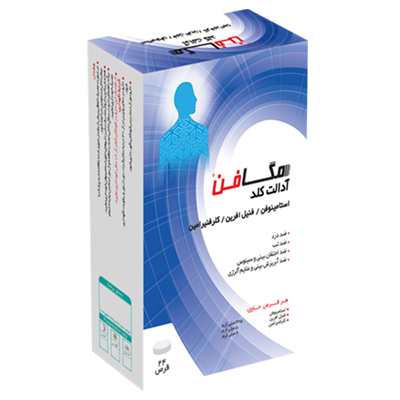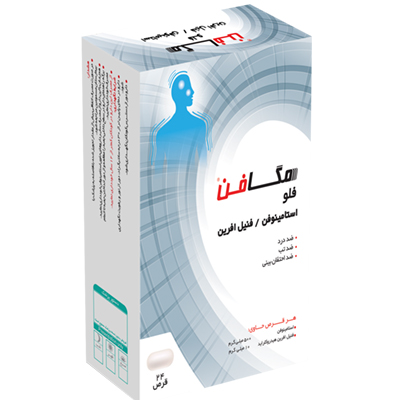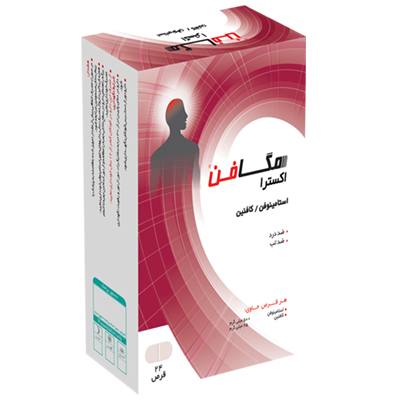Everyone will experience headaches or other headache-related problems at some point in their lives. Some types of headaches require medical attention or an emergency room visit, while others can be treated with home remedies.
Headache types are diagnosed based on their cause, location, frequency, and severity, so being aware of each of these can not only speed up the treatment process, but can also prevent them from occurring in the future.
Types of headaches
To reduce this complication and treat headaches, recognize The best accommodation For headaches and ways to prevent them, the type of physical problem must first be identified. Types of headaches are usually categorized by the degree of pain, which is categorized as mild, moderate, and severe, and the point where the headache occurs.
If your headache is such that you have severe breathing problems or shortness of breath and vision loss, you may be suffering from a severe headache. Severe headaches are usually caused by other disorders and problems that also result in headaches due to the occurrence of such physical problems.
Nearly 150 different types of headaches have been reported to date, which are usually classified as primary headaches and secondary headaches. Below, we will discuss primary headaches and secondary headaches in more detail.

Types of primary headaches and their causes
Most headaches are considered primary headaches, meaning they are not caused by another underlying condition and are triggered by a trigger. Primary headaches are usually caused by genetics, lifestyle, and environmental factors and conditions.
Primary headaches are usually triggered by alcohol or certain foods, such as cheese or chocolate, exposure to allergens, lack of sleep, caffeine, strenuous activity or exercise, or intense laughter or crying. These types of headaches are usually not dangerous, but they can have a significant negative impact on a person's life.
An overreaction to a stimulus in the body usually manifests as a primary headache and may cause pain in various parts of the forehead, neck, head, eyes, jaw, and temples. The causes of primary headaches include:
• Tension headaches
• Migraine headaches
• Hypnic headaches
• Cluster headaches
• Hormonal headaches
• Chronic daily headaches
• Thunderstorm-like headaches
• Ice pick, ice pick or early knife headaches

Types of secondary headaches and their causes
Among the types of dangerous headaches are secondary headaches, which are caused by another disease or problem in the body and often occur rarely. Treating a secondary headache requires treating its cause, meaning that a doctor must first diagnose the underlying disease and after treating that disease, the secondary headache will likely improve. These diseases can be one of the following:
Headaches caused by taking certain supplements, antidepressants, and food preservatives
• Having kidney, liver, digestive, biliary problems, acute sinusitis, adrenal glands
• Eye fatigue and weakness as the number of eyes increases
• Head injury, such as concussion or cerebral hematoma
• Excessive or insufficient intake of vitamins
• Very high blood pressure
• Brain tumor
• Flu
• Meningitis
There are primary and secondary types of headaches that can occur in response to a stimulus or be caused by an underlying condition. Primary headaches can be treated with headache painkillers such as Megafen Extra and Megafen Pain, and secondary headaches are treated by treating the underlying condition.
Diagnosing types of headaches
To find the best pain reliever for a headache, the type and cause must be identified. Diagnosing types of headaches is often the responsibility of a specialist. Of course, some people were able to identify the cause of their headaches based on their biological experience, but if any pain becomes prolonged and chronic, you should definitely see a specialist.
A specialist can diagnose different types of headaches by performing exams and tests, talking to you, and reviewing your medical history and physical health. Some of the tests that are performed to diagnose this condition include:
• Psychological tests and stress and anxiety assessments
• Ear, throat, nose, teeth and eye exams
• Thyroid, kidney and liver function tests
• CT SCAN
• MRI
• MRA
• CBC
• EEG
Another way a doctor can diagnose the type of headache you have is by answering questions that may indicate your lifestyle or inherited genetics. Some of these questions that may indicate your lifestyle include:
• Do you experience symptoms such as fever, dizziness, seizures, nausea, skin rash, high blood pressure, or infection when this physical problem occurs?
• Did you engage in strenuous activity, such as heavy exercise or sex, before developing any of these types of headaches?
• How often do you have this problem? How long does it take for the pain to subside?
• Is your sleep routine and regular, or do you sometimes suffer from insomnia?
• Were you stressed, anxious, or depressed before your tension headache occurred?
• What foods or drinks do you experience this painful condition after eating?
• Are your headaches intermittent or throbbing? Or do you have constant headaches?
• Do either of your parents currently or have had a history of migraines?
Diagnosing types of headaches is the responsibility of a specialist physician, in some cases through various tests and examinations, and in the diagnosis of primary headaches, it is done by getting to know your lifestyle and genetics.
Types of headache treatment
As we said, knowing the cause of a headache is very important and plays a significant role in treating a headache. In some cases, a person will know the cause of their headache, but in others, a person must definitely see a specialist and possibly undergo testing to determine the cause.
Treatment for primary and secondary headaches varies depending on the cause, but the main ways to treat headaches can be described as follows.
• Home treatment
• Treatment with supplements
• Specialized treatments
• Preventive treatments
• Treating headaches with medication
• Types of approved non-drug treatments
What are the best painkillers for headaches or the best pills for headaches?
Types of headache treatment at home include medication and simple home remedies. You may have found a solution to treating headaches experimentally by drinking a cup of tea. If you often suffer from primary headaches, you must have discovered the best pill for headaches by yourself or with the help of a specialist doctor, but if you suffer from this severe pain occasionally, here we will introduce you to the best ways to treat headaches through medication.
Treating primary headaches with Megafen Pain
One of the best types of headache relief, Megaphone pin It contains acetaminophen, caffeine, and ibuprofen to quickly relieve mild to moderate pain. This pharmaceutical product is also known and referred to as a combination drug or a triple-drug among the general public. The presence of caffeine in the ingredients of Megafen Pain increases the absorption of acetaminophen and speeds up the recovery of headaches. Megafen Pain is produced and distributed in capsule form by Kish Medipharm Pharmaceutical Company.
Although acetaminophen is considered a relatively safe drug, excessive use may cause liver problems. Also, ibuprofen is a nonsteroidal anti-inflammatory drug that can cause gastrointestinal problems if taken for a long time and outside the recommended dose by a specialist. Therefore, Megafen Pain is considered a short-term treatment as a headache reliever.
Remember that taking any NSAIDs or nonsteroidal anti-inflammatory drugs with alcohol at the same time can cause drug interactions. If you have digestive and stomach problems, you can swallow this drug with food and do not lie down for 30 minutes after taking Megafenpine to avoid digestive discomfort.
Although Megafen Pain is considered one of the best types of painkillers for headaches, it is also used in other cases, which we will mention below:
• Pain caused by various types of arthritis such as osteoarthritis and rheumatoid arthritis
• Nerve pain caused by conditions such as sciatica and neuropathy
• Dysmenorrhea, menstrual pain and period pain
• Pain caused by surgical procedures
• Muscle and joint strain pain
• Toothache and tooth abscess
• Colds and flu
• Tendonitis and bursitis
• Headaches and migraines
Megafen Extra tablets are a powerful sword for treating migraine headaches.
The best pill for headaches, definitely. Megaphone Extra It is a very safe drug that combines acetaminophen and caffeine and is used to relieve pain, including migraines. The affordable price and availability of this drug are other advantages, and it can have a permanent place in your home pharmacy.
This medicine contains Acetaminophen 500mg / Caffeine 65mg and can be recommended as a pain reliever and antipyretic for the treatment of headaches, migraines, osteoarthritis, arthritis, cold symptoms, toothache, sore throat, muscle aches, menstrual pain and period pain. Remember that since caffeine causes insomnia, it is better not to take Megafen Extra and other medicines containing caffeine at bedtime.
If you are taking caffeine-containing medications such as Megafen Extra and Megafen Pain, it is best to minimize the amount of other caffeine-containing derivatives you consume. The toxic limit of acetaminophen is stated to be 4 grams per day. The maximum dosage of Megafen Extra should be 6 tablets per day.
Although Megafen Extra is considered the best pill for headaches, it may cause drug interactions if taken at the same time as other nonsteroidal anti-inflammatory drugs such as aspirin.
According to experts and consumers, one of the best types of painkillers for headaches is Megafen Pain and Megafen Extra, which, due to their ingredients, can also be used to treat other pains.
Interesting facts about types of headaches and headache relief
We have come to the following conclusions by examining the most common questions asked by people visiting pharmacies and doctors. If you still have questions about types of headaches and headache relief, you may find the answers to these questions by reading the following:
• You are up to 4 times more likely to develop migraines if one of your biological parents has migraines.
• Nearly 90 percent of headaches are primary and may be easily relieved with a headache reliever.
• If you have any type of headache with a skin rash, difficulty breathing, high fever, and headache after a concussion, you should go to the emergency room immediately.
• Cluster headaches occur more frequently in the spring and fall, and men are up to 3 times more likely to experience these types of headaches.
• Thunderclap headaches, which come on suddenly and occur, reach their peak in less than a minute and may be considered primary or secondary headaches. Therefore, after this type of problem occurs, be sure to go to the emergency room and find out the cause of your headache under the supervision of a specialist doctor.
• Since caffeine changes blood pressure and brain chemistry, consuming too much caffeine per day or quitting may cause various types of headaches.
Conclusion
Types of headaches and how to treat them depend on the cause, severity, frequency, and location of the pain. To find out the best pain reliever for a headache, you must first identify the type. Identifying the types of headaches is determined by whether they are primary or secondary, meaning whether they are caused by another underlying condition or by a single allergen or other cause.
Tests, examinations, and talking to a specialist doctor can help diagnose different types of headaches, and you can take a headache treatment approach based on your doctor's advice and prescription.
There are many treatment options that are recommended depending on the type of problem you have. If you have primary headaches, you can reduce or eliminate this troublesome problem by taking Megafen Pain capsules and Megafen Extra tablets.
It should be noted that all of the announced cases are solely due to our responsibility to increase public awareness and will certainly not replace medical orders in any way.
Download PDF file





